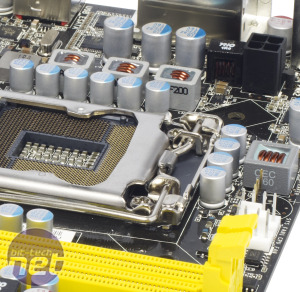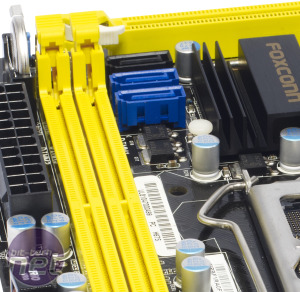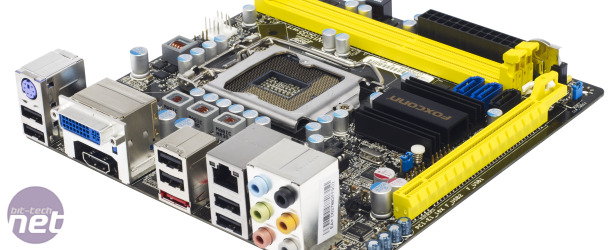
Performance Analysis
Bog-standard components aside, the Foxconn H67S performed admirably given its price. Its overall score of 1,880 points in our Media Benchmarks suite was among the slowest we’ve seen for an LGA1155 board, but only by a tiny margin, and LGA1155 processors are lightning-quick compared with many other CPUs.It was in the multi-tasking test that the Foxconn lagged behind other boards. This was mainly because the board only let us run our memory at 1,066MHz, rather than the 1,333MHz maximum allowed by the H67 chipset. We tried other kits to determine whether it was a compatibility issue, but the board was unable to run any of these at 1,333MHz; neither could we force this speed manually.
Interestingly, the Foxconn H67S outperformed the Zotac H67-ITX by a tiny margin in Crysis, managing a minimum frame rate of 34fps (1fps faster than the Zotac) and the same average of 59fps. The seesaw tipped back the other way in our storage speed testing, however, as the Zotac’s ports were marginally faster in all but one metric.
As with Zotac's H67-ITX, we decided to investigate the EFI of the Foxconn to see if there were any overclocking options. It’s worth noting at this point that while the H67S has an EFI system, it’s presented as a BIOS – there are no images or animations, and there’s no mouse support.
However, we forgot our disappointment as soon as we stumbled on the H67S' Performance Tuning menu, which gave the appearance of being able to allow the CPU to Turbo Boost to higher frequencies. Unfortunately, though, any changes that we applied to these settings, such as asking the chip to Turbo Boost up to 4GHz, failed to alter the CPU’s performance.
Conclusion
To quote an old cliché, you get what you pay for with the Foxconn H67S. It lacks the premium components or extensive feature-list of the Zotac H67-ITX but it costs almost half the price. If your aim is simply to build a tiny, basic but fast PC then the H67S is the de facto choice – the typical layout and low price make it ideal for small work systems and media PCs. Just remember that you may as well use 1,066MHz memory, and the board doesn’t have USB 3 ports as standard.- Performance
- x
- x
- x
- x
- x
- x
- x
- -
- -
- -
- 7/10
- Features
- x
- x
- x
- x
- x
- x
- -
- -
- -
- -
- 6/10
- Value
- x
- x
- x
- x
- x
- x
- x
- x
- -
- -
- 8/10
- Overall
- x
- x
- x
- x
- x
- x
- x
- -
- -
- -
- 7/10

MSI MPG Velox 100R Chassis Review
October 14 2021 | 15:04











Want to comment? Please log in.